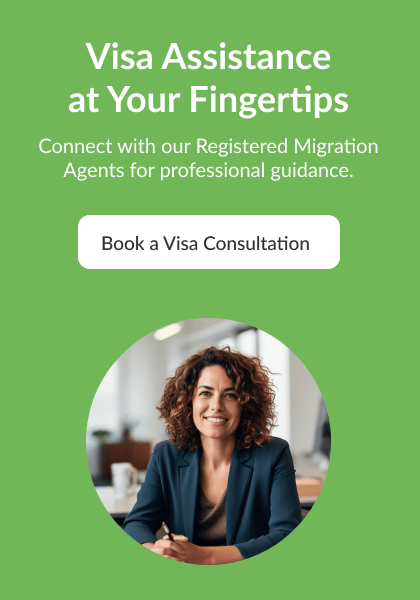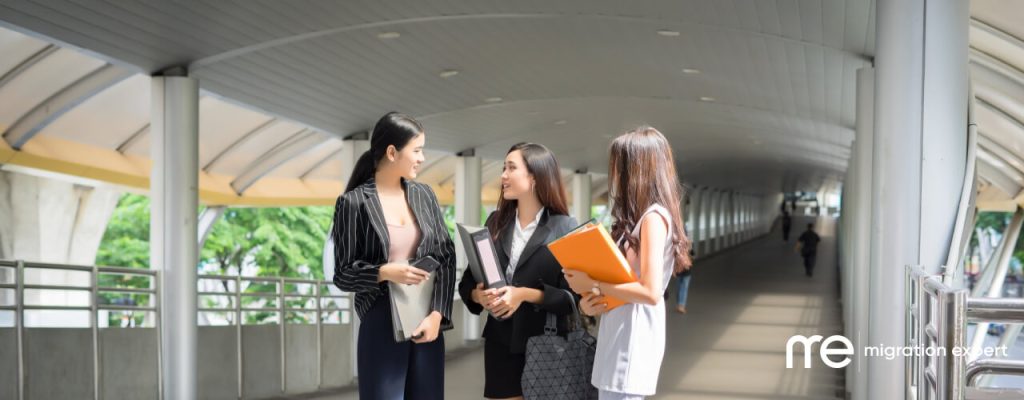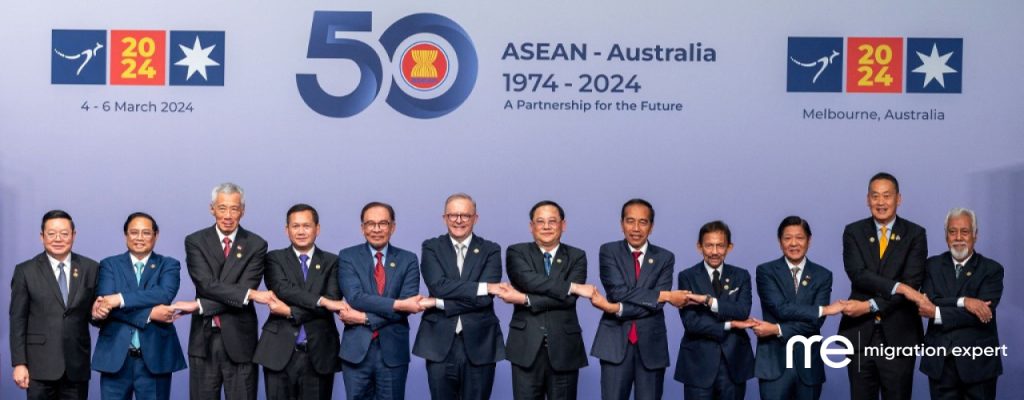Changes to visa conditions 8107, 8607, and 8608
Starting from 1 July 2024, significant changes to visa conditions 8107, 8607, and 8608 will come into effect as part of the Australian Government's Migration Strategy. These changes are aimed at addressing worker exploitation and enhancing productivity by improving labour market mobility for temporary migrants. This article provides a comprehensive guide to these new conditions, detailing how they affect holders of the Temporary Work (Skilled) visa (subclass 457), Temporary Skill Shortage visa (subclass 482), and Skilled Employer Sponsored Regional (provisional) visa (subclass 494).
Understanding the Changes
Enhanced Labour Market Mobility
The new visa conditions offer greater flexibility for temporary migrant workers, allowing them more time to transition between employers. This change is designed to reduce the risk of worker exploitation and ensure that temporary visa holders can continue to support themselves while seeking new employment opportunities.
Key Changes:
- Extended Time to Find New Employment: Visa holders who stop working with their sponsoring employer will now have up to 180 days at a time, or a maximum of 365 days in total across the entire visa grant period, to find a new sponsor, apply for a different visa, or arrange their departure from Australia.
- Flexibility in Employment: During this period, visa holders can work for other employers, including in occupations not listed in their most recently approved sponsorship nomination, as long as they are not working in an occupation that requires specific licences or registrations that they do not hold.
Conditions for Employment During Transition
While the changes offer more flexibility, there are specific conditions that visa holders must adhere to during their employment transition.
Employment Conditions:
- Ceasing Work with Current Sponsor: Visa holders must cease work with their sponsoring employer before starting employment with another employer unless exempt.
- Nominated Occupation Compliance: While employed by their existing sponsor, visa holders must remain in their nominated occupation.
- Licensing and Registration Requirements: Visa holders must not engage in work that requires specific licences or registrations unless they possess those credentials. This includes adhering to any conditions or requirements associated with their occupation.
Sponsor Obligations
Sponsors are required to notify the Department of Home Affairs of any changes in the employment situation of visa holders within 28 days. This includes if a visa holder resigns or if there are changes in the sponsorship status. More detailed information can be found under Sponsorship Obligations for Standard business sponsors.
Applicability of Changes
The changes to visa conditions 8107, 8607, and 8608 apply to both existing visa holders and those granted a visa on or after 1 July 2024. It is important to note that any periods a visa holder stopped working for their sponsor before 1 July 2024 will not count towards the new time periods outlined in these changes.
Impact on Visa Holders
Temporary Work (Skilled) Visa (Subclass 457)
Holders of the Temporary Work (Skilled) visa will benefit from increased flexibility in employment transitions, allowing them to seek new sponsorship or other visa options without the immediate pressure of visa cancellation due to unemployment.
Temporary Skill Shortage Visa (Subclass 482)
For those on the Temporary Skill Shortage visa, the extended period to find new employment will help mitigate the risks associated with abrupt job loss and ensure that they can continue to support themselves while exploring new opportunities within Australia.
Skilled Employer Sponsored Regional (Provisional) Visa (Subclass 494)
Visa holders in regional areas will particularly benefit from these changes, as the extended timeframes will provide ample opportunity to secure new sponsorship within their region or apply for different visa pathways, thereby promoting regional development and stability.
Conclusion
The upcoming changes to visa conditions 8107, 8607, and 8608 mark a significant shift in Australia's approach to temporary migration. The Australian Government aims to tackle worker exploitation and enhance productivity by offering greater flexibility and support to visa holders. These changes are set to provide temporary migrants with the necessary time and freedom to navigate the labour market more effectively, ensuring that they can continue to contribute to the Australian economy while securing their own livelihood.
Book a Visa Consultation
Considering a move to Australia or need assistance with your visa application? Do you want to sponsor an employee or have questions about the 482 visa or any other visa? Book your consultation with our experienced Registered Migration Agents. Let us help you navigate the complexities of the Migration Program and take your first step towards a promising future in Australia.
Making It Easy to Sponsor Skilled Workers
Discover Your Eligibility with Our Free Employer Sponsorship Assessment
- Expert Migration Agents
- Streamlined, Efficient Process
- Tailored Sponsorship Guidance
- Supporting Australian Businesses Since 2002
If you are planning to work in Australia, or if you are considering sponsoring talent to work in your business under the Temporary Skill Shortage (TSS) 482 visa, it’s crucial to stay informed about the latest changes to ensure your application is successful. For the most up-to-date information on the 482 visa, we encourage you to visit our official 482 visa page for comprehensive details on requirements, fees, and the latest updates.
Related Reading
- Australia’s New Skills in Demand (SID) Visa Replaces the Temporary Skills Shortage (TSS) Visa – What does it mean to those with existing TSS applications
- Comparison of the Skills in Demand Visa (Subclass 482) vs. Temporary Skill Shortage (TSS) Visa (Subclass 482)
- Comprehensive Guide to the Core Skills Stream of Australia’s Skills in Demand Visa (Subclass 482)
- Explanation of the Specialist Skills Stream – Skills in Demand Visa (Subclass 482)
- Skills in Demand Visa (Subclass 482): New Changes, Eligibility & Pathways to PR in Australia
- Three-Tiered Pathway Structure of the Skills in Demand Visa (Subclass 482) Explained in Detail
- Australian Government Introduces Core Skills Occupation List: Major Overhaul in Skilled Migration Program
- The Rise of U.S.-Born Residents in Australia: A 30-Year Growth Story (1996–2023)
- Is the 482 (TSS) Visa Difficult?
- Navigating the Australian Temporary Skill Shortage (TSS) Visa Subclass 482
- Navigating Permanent Residency from a 482 Short-Term Stream Visa
- Can I Apply for PR While on a 482 (TSS) Visa?
- Navigating Employer Change on a 482 Visa in 2024: Your Essential Guide
- Navigating Sponsorship Change for Your 482 Visa: A Comprehensive Guide
- What Happens If I Quit My Job on a 482 Visa?
- Transferring Sponsors on a 482 Visa: A Guide to Navigating the Process in Australia
- What Happens if I Quit My Job on a 482 Visa?
- What is the Minimum Salary for a 482 Visa?
- Changes to Work Visas 482, 457, and 494 Effective July 2024. What Sponsors Need to Know
- Understanding the New Work Experience Requirement for the 482 Visa: A Simplified Guide 2024
- Sponsorship Obligations of a 482 Visa Standard Business Sponsor
- What is the 482 Visa in Australia?
- Does a 482 (TSS) Visa Get Childcare Subsidy?
- Who Can Sponsor a 482 (TSS) Visa?
- What are the Cons of a 482 Visa?
- What are the Restrictions on a 482 Visa?
- How Can I Convert My 482 Visa to Permanent Residency (PR)?
- Can I Buy a House in Australia on a 482 Visa?
- What are the New 482 Visa Changes and the latest news?
- Can I Bring My Parents to Australia on a 482 Visa?
- Can I Get PR After 2 Years in Australia?
- Is a 482 Visa Eligible for Medicare?
- What are the Benefits of a 482 (TSS) Visa?
- How Long Does It Take from 482 (TSS) to PR?
- What are the stages of a 482 (TSS) visa?
- Can I Do a Second Job on a 482 (TSS) Visa?
- Can I Bring My Wife/Partner on a 482 (TSS) Visa?
- Working While Sponsored: Can You Have a Second Job on a 482 Visa in Australia?
- The 482 Visa Transformation: A Guide to Australia’s “Skills in Demand” Visa in 2024
- Mastering the TSS 482 Visa: A Detailed Guide to Skilled Work in Australia
Remember:
This post is for general informational purposes only and is not a substitute for professional immigration advice. Given the uniqueness of every case, engaging with a registered migration agent is highly recommended for bespoke guidance and to navigate the specific details of your situation effectively. Book a visa consultation with a Registered Migration Agent
Subscribe to our newsletter
Sign up to our weekly newsletter to get the latest news about all things visas & immigration.












